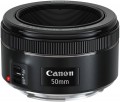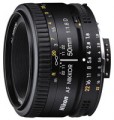DxOMark rating
The result shown by the lens in the DxOMark rating.
DxOMark is one of the most popular and authoritative resources for expert testing of photography devices. According to the test results, the lens receives a certain number of points; The more points, the higher the final score.
System
The system indicates which brand of cameras this lens is designed for. Manufacturers of photographic equipment often use original mounting systems in their cameras that are not always compatible with each other; therefore, for normal use, the lens must be originally designed for the corresponding system. At the same time, note that the actual compatibility will also depend on the mount (see "Bayonet (mount)"). At the same time, one system often includes several mounts (for example, Canon and Nikon); it happens vice versa — one mount can be used in several systems at once (for example,
Micro 4/3 is used by both Olympus and Panasonic). In general, the optimal selection order is as follows: first clarify the compatibility of the lens with the system, then with a specific mount.
Also note that third-party manufacturers (who do not produce cameras and deal only with lenses) often produce models designed for several different systems at once. Such compatibility can be achieved both through a set of adapters (included in the package or sold separately), and through the release of different modifications of the same lens, differing only in mounts. The features of each such model should be specified separately.
Mount
The type of mount used to connect the lens to the camera. The name comes from the English "bayonet", meaning "bayonet" and a bayonet-type connection. Bayonet mounts are used in the vast majority of modern digital cameras due to their reliability and ease of use.
Full compatibility of the lens with the camera is guaranteed only if the types of their mounts match. Some mounts are compatible with each other via adapters, but such a connection can limit the capabilities of the lens (for example, it will make it impossible to use autofocus) and is generally not considered optimal. It is worth considering that within the same system (see above) different mounts are often used, which are also incompatible with each other.
So, the manufacturer Canon has mounts
EF-M,
EF-S,
EF,
RF,
RF-S. Leica has
Leica M,
Leica SL,
Leica TL. Nikon has
Nikon 1,
Nikon F,
Nikon Z in its arsenal. Pentax optics are equipped with
Pentax 645,
Pentax K,
Pentax Q. Samsung uses
NX-M and
NX mounts. Sony models include
Sony A and
Sony E. In addition, there are other types of mounts on the market - both branded (
Fujifilm G,
Fujifilm X,
Hasselblad H,
Sigma SA) and universal (
Four Thirds (4/3),
Micro 4/3).
Note that there are lenses that are declared compatible with several mounts at once. This “omnivorousness” can be realized in different ways. For example, some models have a non-standard mount on the lens body, and compatibility with various mounts is ensured through the use of adapters; These adapters can be included in the delivery set or purchased separately. Another option is that the lens is available in several separate modifications, each for its own mount. These details should be clarified before purchasing.
Viewing angles
This parameter determines the size of the area of the scene being shot that falls into the frame. The wider the viewing angles, the larger the area the lens can capture in one shot. They are directly related to the focal length of the lens (see "Focal length"), and also depend on the size of the specific matrix with which the optics are used: for the same lens, the smaller the matrix, the smaller the viewing angles, and vice versa. On our website, in the characteristics of optics, viewing angles are usually indicated when used with the matrix for which the lens was originally designed (for more details, see "Matrix Size").
Minimum focus distance
Minimum focus distance (m) - the smallest distance from which you can focus on an object and take a photo. Usually it ranges from 20 cm for wide-angle lenses to several metres for telephoto. In the macro mode of the camera or with the help of macro lenses, this distance can be less than 1 centimeter.
Maximum zoom
The degree of magnification of the object being shot when using a
lens for macro shooting (that is, shooting small objects at the maximum possible approximation, when the distance to the subject is measured in millimetres). The degree of magnification in this case means the ratio of the size of the image of the object obtained on the matrix of the camera to the actual size of the object being shot. For example, with an object size of 15 mm and a magnification factor of 0.3, the image of this object on the matrix will have a size of 15x0.3=4.5 mm. With the same matrix size, the larger the magnification factor, the larger the image size of the object on the matrix, the more pixels fall on this object, respectively, the clearer the resulting image, the more details it can convey and the better the lens is suitable for macro photography. It is believed that in order to obtain macro shots of relatively acceptable quality, the magnification factor should be at least 0.25 – 0.3.
Autofocus drive
A type of drive that ensures the movement of lens structural elements during automatic focus. Currently, the following types can be used:
—
Ultrasonic motor. The most advanced type of drive to date. Ultrasonic motors are much faster than conventional motors, provide higher accuracy, consume less power and are virtually silent. However, their cost is quite high.
—
Stepper motor. Drive control focal length and zoom (zoom). This type of motor is used for the most part only in full-size digital cameras. Among the advantages of a stepper motor, one can note: high reliability and accuracy of operation; in addition, it does not require power supply to maintain focus and zoom. Of course, stepper motors are not without drawbacks. Among the minuses can be identified: slow speed and increased noise. Additionally, a stepper motor is characterized by large dimensions and a rather large weight, which physically does not allow this type of drive to be integrated into the optics of mobile phones and ultra-compact cameras.
— Motor. In this case, an electric
motor of a traditional design is meant. Such drives are simple and, as a result, inexpensive. Their disadvantages are the relatively low speed of operation, as well as the noise produced during this; the latter can sometimes be critical — for example, when shooting wildlife. Recently, designers have been us
...ing various tricks to neutralize these shortcomings, but in general, the characteristics of conventional motors still remain relatively modest.
— Is absent. The complete absence of an autofocus motor in the lens. Focus such optics can be carried out either by the “screwdriver” system, or strictly manually (for more details on both options, see below).AF drive (screw driven)
The presence in the
lens of an autofocus drive of the "screwdriver" type. Lenses of this design do not have their own autofocus motor at all — it is located in the camera. Interchangeable optics, on the other hand, carries only the focus mechanism itself and has a special socket, with which, when installing the lens, the axis of the camera motor is joined.
Historically, the "screwdriver" is one of the first types of autofocus, but lenses and cameras with this feature are still widespread, in particular with Pentax and Sony Alpha. There are several reasons for this: although “screwdrivers” lose to ultrasonic drives, for the most part they outperform lenses with traditional motors; at the same time, due to the transfer of the engine to the camera, the weight and dimensions of the lens are reduced.
Internal focus
Lenses using the
internal focus system. In such optics systems, focus is carried out only due to the movement of elements inside the lens body; the outer parts remain completely fixed and the size of the lens does not change. This provides additional convenience — in particular, it allows you to easily use petal hoods and those types of filters for which the correct position on the lens is important (in particular, gradient ones). In addition, the absence of moving elements from the outside has a positive effect on security and resistance to dust / precipitation (although the specific degree of dust and water protection may be different).

